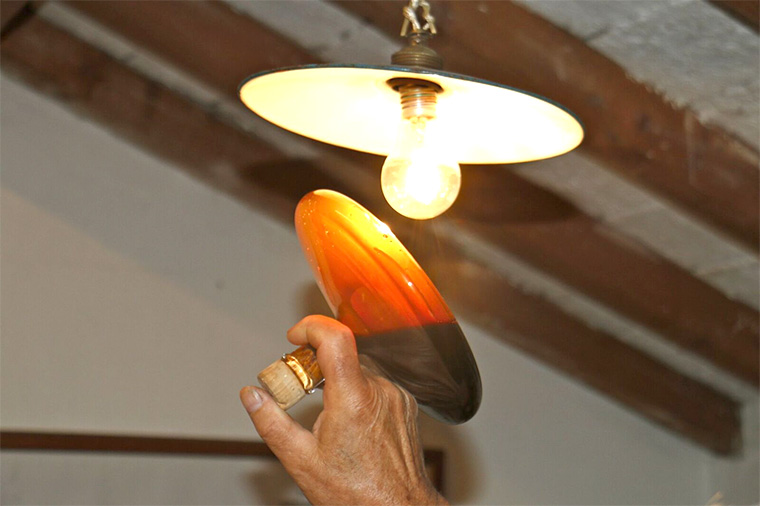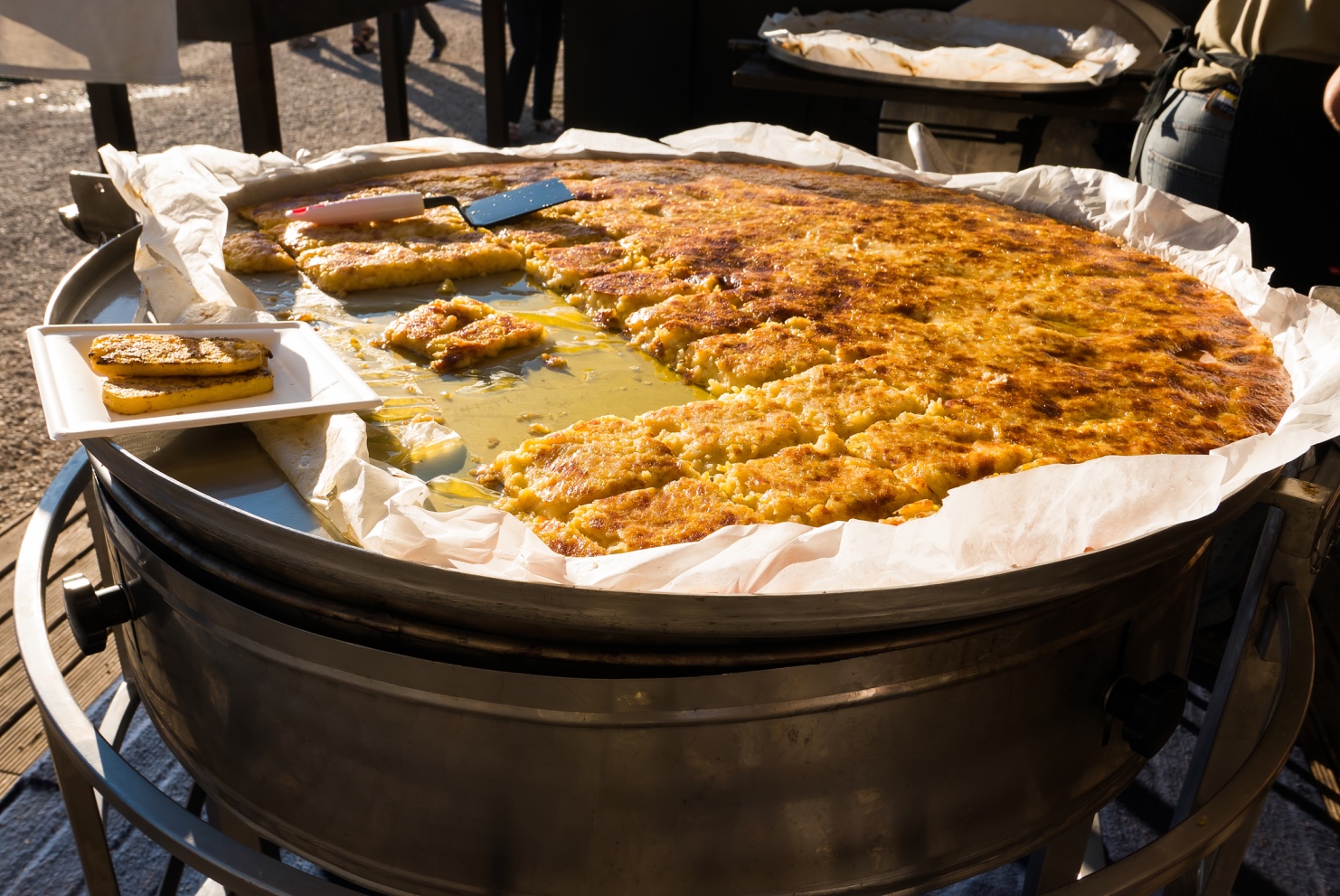There is no better time than fall for visiting Italy. The weather is mild. It’s low season, and autumn foliage brings some additional charm to the already captivating Italian countryside. Also, many of the food products that have made Italy famous are ready now: wine, mushrooms, truffles… Fall is perfect for a gastronomic tour!
An area that is sort off the beaten path for Americans, but truly worth visiting is Castelvetro, Spilamberto, Vignola and its surroundings. Here you can combine art with design and deep, ancient culinary traditions and many unique food specialties.
Castelvetro, Spilamberto, and Vignola are delightful small medieval towns nested between the city of Modena and the Tuscan Emilian Apennine, hills so beautiful to be recently awarded as part of the Unesco’s Mab (Man and biosphere) program.
This area, famous for the many medieval castles and towers, makes an ideal starting point for excursions that include Modena and its Piazza Grande (with the Duomo and Ghirlandina Palace), and Maranello, home of the Ferrari cars. The region also offers outstanding food specialties such as Traditional Balsamic Vinegar, Nocino, Parmigiano Reggiano made
with milk from Vacca Bianca Modenese, Prosciutto from Modena, Lambrusco Grasparossa, and fall produce, such as porcini mushrooms, chestnuts, and black truffles from the nearby hills.
Spilamberto is considered the heart of the Traditional Balsamic Vinegar, the authentic Balsamic vinegar of the very best quality, which is awarded with the stricter DOP (Product Denomination of Origins) European seal. It is the home of the Traditional Balsamic Vinegar Consortium and Museum, where the making and history of the Traditional Balsamic Vinegar is carefully explained.
The Traditional Balsamic Vinegar has one single ingredient: must, which derives by slow cooking grape juice, and is then aged into barrels. The aging system is kind of unusual as it happens in a series of barrels (usually 5 or 6 of different woods, named batteria) of decreasing size. Every year a portion of Balsamic Vinegar is collected from the smallest barrel, which is then refilled with some vinegar coming from the slightly bigger barrel. The process is repeated from barrel to barrel and the largest barrel is filled with freshly cooked must. The older the set of barrels, the more sophisticated the vinegar.

The overall production process is monitored, from beginning to the end, by the Consortium, which will taste the vinegar once it’s ready, and approve it for DOP seal. Traditional DOP Balsamic Vinegar can be “Affinato” if it’s 12 years or older, or labeled “Extravecchio” for the most refined 25 years or older kind.
Each June the town holds the folkloristic St. John feast, a 3-day event full of activities with music, games, cooking shows, and the famous Traditional Balsamic Palio: a contest among Traditional Balsamic producers that will crown the best balsamic vinegar in the world!
I was very lucky to attend this competition this past June, an earnest passionate contest involving local authorities and food enthusiasts, accompanied by lots of emotions.
The Palio involves every year something like 30 certified tasters. This year they were particularly busy with 1567 different balsamic vinegars to sample, which translated into over 15,000 tastings (each sample is tasted several times). Amazingly, the winners were not big producers or companies. The competitors are mostly tiny producers, many of them passionate family makers that will share their liquid gold with just a bunch of relatives and friends, and their production will never really reach the market. By attending this event, you truly realize how this ancient, super tasty condiment is not the result of a marketing case study, but the product of a century tradition – something even nowadays is truly deep into the local culture. Many families produce Traditional Balsamic Vinegar in the area. For example Ludovica, the local PR attaché who was showing me around, also makes Balsamic Vinegar. As it is customary in this area since the medieval times, her family started a small “batteria” (series of barrels) when she was born. The precious family legacy would be ready when the girls in the family would be old enough for marriage – and now Ludovica enjoys her small yearly production of “Extravecchio”.
Tasting the Traditional Balsamic Vinegar is almost a meditative experience, something that goes far and beyond a simple act of sampling. Traditional Balsamic Vinegar is of a deep, dark glossy brown and has syrupy consistency. It has a characteristic aromatic perfume, sharp and complex with harmonic acidity, and a well-balanced sweet-sour taste. It’s sublime when tasted drizzling a few drops on top of Parmigiano-Reggiano cheese, or fresh strawberries, or as a finish touch on many traditional dishes, as it is customary in the area, such as risotto, tortelloni, meat main courses, even gelato!
Few yards from the Balsamic Museum is the “Ordine del Nocino Modenese”, a non-profit organization that protects, nurtures and spreads the ritual of authentic Nocino making, one of my favorite after dinner drinks and a gem among traditional Italian homemade liquors.
The organization was started in the Seventies by the wives of those belonging to the Traditional Balsamic Vinegar association. In fact, traditionally within the family, it was the husbands’ job to look after the Balsamic Vinegar, while wives were assigned to the Nocino curing… The Ordine del Nocino Modenese also established a Palio to prize the best Nocino of all. The Palio is held each year on February 14th, St. Valentine day, and this year’ competition has already entered 821 different liquor samples.
Nocino is made with noci, walnuts in Italian. Walnuts are harvested still green, unripen, and following the tradition they should have been kissed by St. John’s dew (so picked on or around June 24th) – an almost magic ritual that welcomes midsummer solstice. Walnuts are then cut into fourths and infused with sugar and alcohol for at least 2 months, then filtered and consumed, or aged into wood barrels.
The Nocino would then be ready for drinking in the colder months, around Christmas — sometimes Christmas of the following year, for the most sophisticated makers and discerning palates. The result is a deep brown liquor, clear, of a silky consistency with strong body, impeccably aromatic with persistent walnuts scents… The perfect drink to close a traditional local meal, especially during this time of the year!
Castelvetro is the nearby charming village, with antique towers, cobblestone streets, and a panoramic view over the surrounding countryside from the main piazza, which pavement incorporates a large checkers board. This is where each September the fascinating “Dama Vivente” takes place, an event where the participants dress up in Renaissance costumes and play a checkers living game. Right after, always in September, the town celebrates its wine tradition with another festival: “La festa dell’uva e del Grasparossa”. In fact, Castelvetro is famous for its Lambrusco Grasparossa, a dark purple red wine, dry to semi-sweet, fizzy with evanescent foam, pleasantly acidic with deep cherry notes – one of the best Lambrusco’s in Italy. The Grasparossa wine is the great accompaniment for Parmigiano-Reggiano, local salumi (cured meats), tigelle (a local flat bread cooked in clay molds and in wooden burned ovens), and local more complex food plates such as the bollito misto, tortellini in brodo, zamponi and cotechini (cooked salami). Right outside Castelvetro, don’t forget to visit also Levizzano’s Medieval Castle, which has frescos and antique wooden ceilings, and a beautiful view on surrounding hills cultivated with Lambrusco vines.
While visiting the area, you shouldn’t miss tasting the Vacca Bianca Modenese, or white cow, a local antique breed of cow that became rare, since it’s been substituted over the years by more productive kinds. The Vacca Bianca’s meat is known for being of an excellent delicate taste: lean and tender at the same time. The cow also produces much richer milk, yielding superior cheese products, such as ricotta, and the outstanding Parmigiano-Reggiano cheese. The production is currently so limited (just two wheels of cheese per day) that you can only try this kind of Parmigiano-Reggiano locally.
A few miles from Castelvetro and Spilamberto is Vignola, with its truly fabulous Rocca: one of the most interesting castle in Emilia, with exquisite frescos. The town is famous for the Moretta di Vignola, a very sweet, succulent, aromatic cherry of a very dark red color. Here you can taste the fresh cherry in late spring, or jams and crostate (tarts and pies with jam fillings) throughout the year. In Vignola you can also taste some very fine cakes such as the traditional Torta Barozzi, a dense, rich chocolate, coffee and nuts cake, and Torta Muratori (with almond), and more modern and original creations from the young and prized upcoming pasticciera Serena Paioli.
Between nature, art and good food, I can promise, this area of Italy will enchant you.
Grazia is an Italian food writer, author of the iPhone recipe app “Cook with Grazia.” She has been living in Portland, Oregon, since 2001 and has written about food, business and travel for Italian publications since 1994. She has always been in love with cooking and passionate about Italian food specialty products. On her spare time she loves to study and visit where the greatest quality ingredients are made.
As a food writer, president of an Italian school and the mother of three, Grazia knows what being busy means. Nevertheless, she makes it a priority to bring dinner to the table every night. Her specialties are simple, quick recipes that she can successfully manage with limited time, hungry children, multiple youth sports activities, and sometimes an empty refrigerator (oopsie). Her Italian background is all about fresh homemade meals, and she has never been comfortable with getting take-out – as many of her American friends are – both for taste and health reasons. “With a little planning, and the right approach” – Grazia says – “cooking homemade meals every day is doable and healthier.” Here is how she does it and what she cooks! www.cookwithgrazia.com





























